Imagine a serene retreat, a verdant valley nestled in the lap of the mighty Himalayas, where your hands will be cold but heart warm. A place far, far away from the helter-skelter of your daily life, where peace rules supreme and where murmurs of the river will be a therapeutic balm to your heart and soul. And the rustling of the pine and deodar trees will take your mind off from everything. That’s Jibhi for you. Part of the gorgeous Tirthan Valley, Jibhi is a hamlet, where nature has showered its endless bounties.
Let’s take you on a journey to Jibhi then. And a little bit of Manali.

Table of Contents
Getting there:
We are listing the three available options to visit Jibhi. You can pick whichever suits your time and pocket.
By bus: The best way is to reach New Delhi by train or flight and take overnight Volvo bus from the Kashmere Gate area of the capital. Alternatively, you can also board the bus from Chandigarh as per your convenience. Bus service of Himachal Pradesh is outstanding and we suggest availing this facility over anything else. Seats of buses can be booked online from https://www.hrtchp.com/hrtc_info/ and http://www.booking.hptdc.in/. We had booked seats in Himsuta Volvo bus. Get down at Aut just before the tunnel starts and book a cab for reaching Jibhi. Cabs generally charge around IN 1200 to reach Jibhi.
By train: The nearest rail station is Shimla, which is 150 kms. away from Jibhi. However, it is not very convenient if you are travelling on a tight schedule.
By flight: Bhuntar, which is 60 kms away from Jibhi, has an airport. But, it is not easily accessible.
Day 1: Reaching Delhi and overnight bus journey
First day of this trip is all about travelling hither and thither. Upon reaching New Delhi airport, we suggest hopping onto the Delhi Metro, which offers excellent service and will take you to your destination of Kashmere Gate (the metro station also goes by this name) in no time. Grab some quick bites at the McDonalds nearby before boarding the bus. Afterwards, grab your seat, go to sleep and you will be in Jibhi just like that.
Day 2: Jibhi & it’s surroundings.
Next morning, you will wake up with the bus zigzagging across rugged mountains and the brisk Beas river.
For getting to any of the hamlets of Tirthan Valley, you need to get down from the bus at the Aut tunnel. Rental cars are available from here to reach Jibhi, Banjar, Gushaini or Shoja.
Jibhi is an hour away from Aut tunnel. The road is delightful, lined with Pine, Deodar, Juniper trees. The pristine Tirthan river will accompany you all the way up to Jibhi.
Surely, it will be a love at first sight with Jibhi. It’s calm aura, it’s tranquility will take your breath away as soon as you reach Jibhi. Your mind will be at peace without zero effort. Just remember not to rush and take your time slowly here.

Keep the first day for exploring the surroundings of Jibhi. Opt for one of the many day treks in Great Himalayan National Park (GHNP). The GHNP is distinguished for its astounding biodiversity and was declared a UNESCO World Heritage Site in 2014. We went for the Gushaini to GHNP gate route, which is roughly 8 kms of light trek through dirt road. The bluish green Tirthan river will offer some mesmerizing views. There are several types of birds visible in this route. No permission is required for this day trek. However, prior permission from concerned authorities is needed if you wish to explore inside the park. For more information, visit https://www.greathimalayannationalpark.org/ .

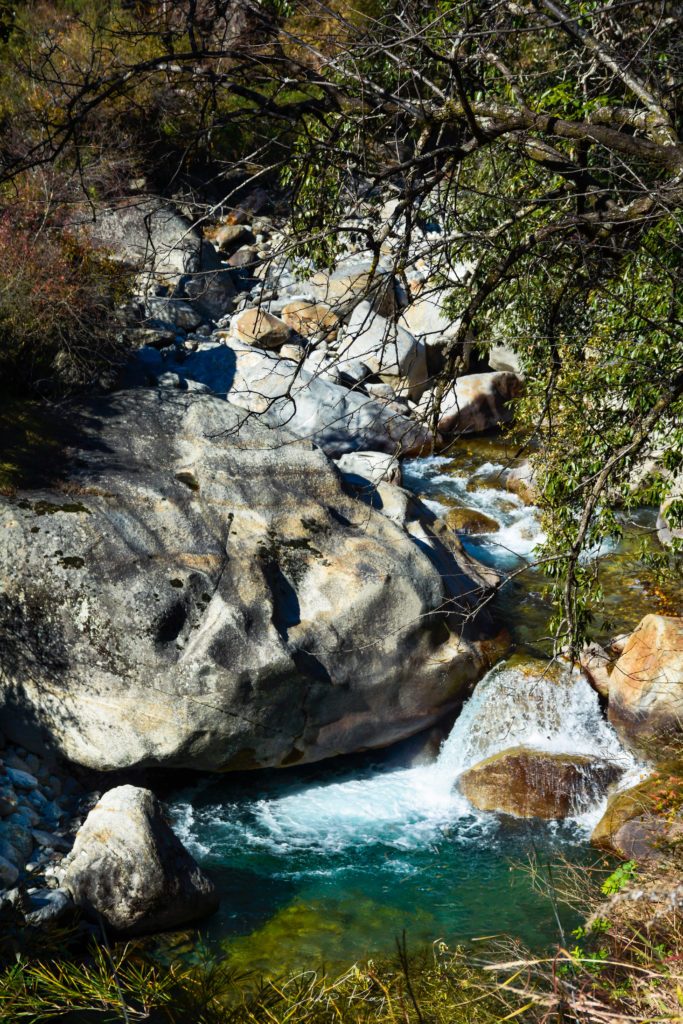
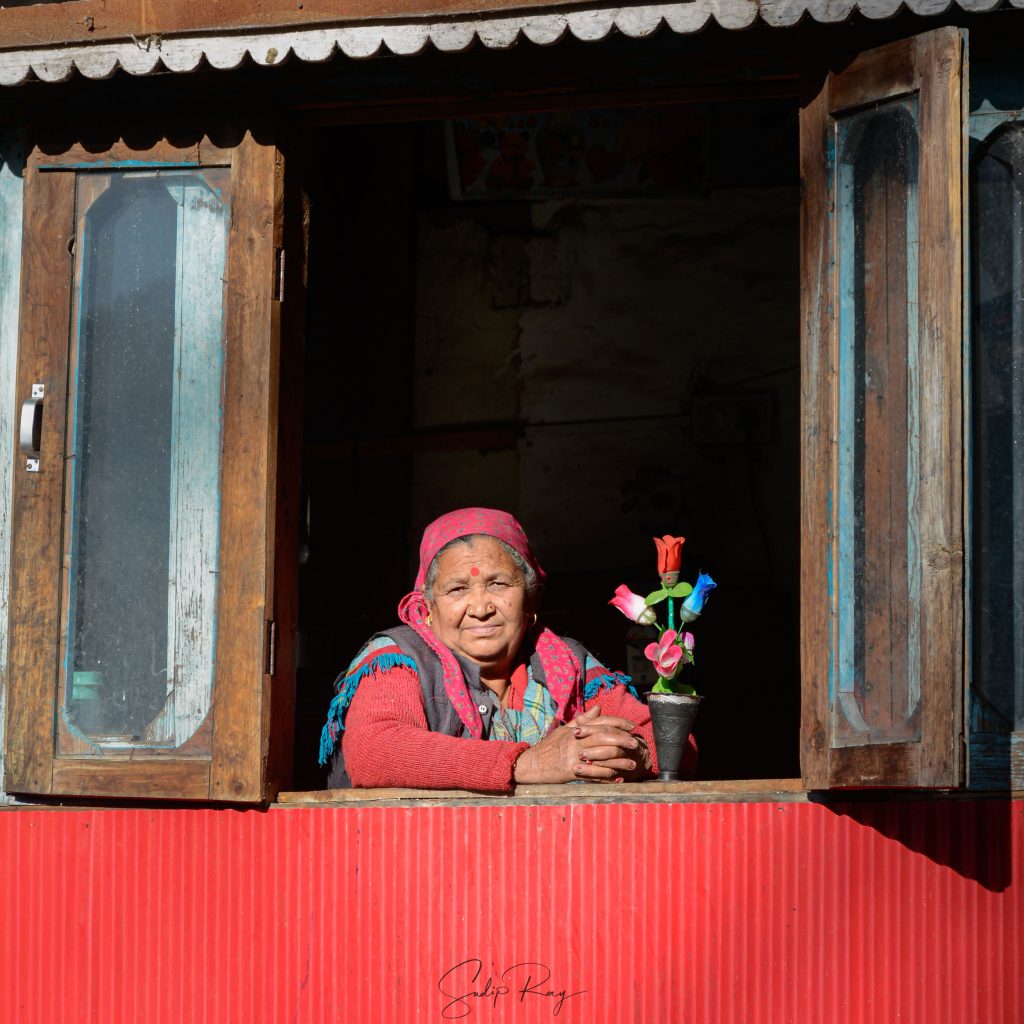
Hike to the Chehni Kothi, an imposing tower made in Pahadi style of architecture. The wood and stone tower is located in Chehni village, which is about an hour from Jibhi. En route, visit the temple of Shringa Rishi, who is the most important god or Devta of Tirthan Valley.
Where to stay in Jibhi:
Options for accommodation in Jibhi are few. We stayed at the beautiful Rana Swiss Cottages, which is owned by Mr. B.S. Rana, a retired military officer. He is also the owner of the Doli Guest House, which used to be his ancestral home and built in traditional Pahadi style. The cottages are influenced by the architectural style of Swiss chalets, while preserving the Pahadi ethos. The cottages are conveniently located overlooking the Tirthan valley and you can spend a whole day sitting on the verandah with your favorite book. The rooms are made of wood, thus retaining warmth in the chilly weather. Heavy, fluffy blankets and fiery Bukhari heater ensure that you stay warm inside when the temperature touches zero outside. Their hospitality is outstanding. We loved how they were always ready to help us with anything – from suggesting places of interest to keep the Bukhari on the go always. And, they serve delicious food too. For bookings and further information, visit http://kshatra.com/.

Day 3: A rainbow waterfall & Jalori Pass
Another beaming morning, another day for stirring activities.
Start the day by indulging in a hearty, homemade breakfast on the veranda. Bask in the sunshine, behold the valley and savour every moment of it.


Later, take a stroll along the winding road of the village to reach the Jibhi waterfall. The dirt path leading to the waterfall takes you through serene woods, where you are bound to lose yourself.

The waterfall is small but spectacular. It’s crystal clear water cascades from a hilltop, spilling its frothy stream into a pool of water below. The gurgling sound of the fall, the musty aroma of the trees, the occasional rainbows – all create an otherworldly experience here.

Next stop is Jalori Pass, which is just 12 km from Jibhi and takes a little more than 30 minutes to reach. It is one of the prime attractions of Tirthan Valley. It is a high mountain pass situated at a height of 10,800 ft, connecting the Kullu district with Shimla.
The thrilling ride through treacherous twists is an adventure in itself. The meandering road leading to Jalori Pass is as picturesque as the place itself. Lush valley of coniferous forests run all along the winding road, dotted with speckles of snow. As you near Jalori, intensity of snow cover increases on both sides of the road. The biting cold escalates along with the thickness of snow. You are bound to stop at random spots for getting swayed by the stunning visuals.

Upon reaching, hike up the Jalori ridge through knee-deep snow. The hike seemed pretty intense given the vast snow cover and frosty wind. Once you reach the top, you will be dazed by the stunning visuals. In a word, Jalori is a paradise. With clear blue sky above and pristine, snowy ground below, it offers a breathtaking 360 degree view of the lofty, snow-capped ranges of the Himalayas.

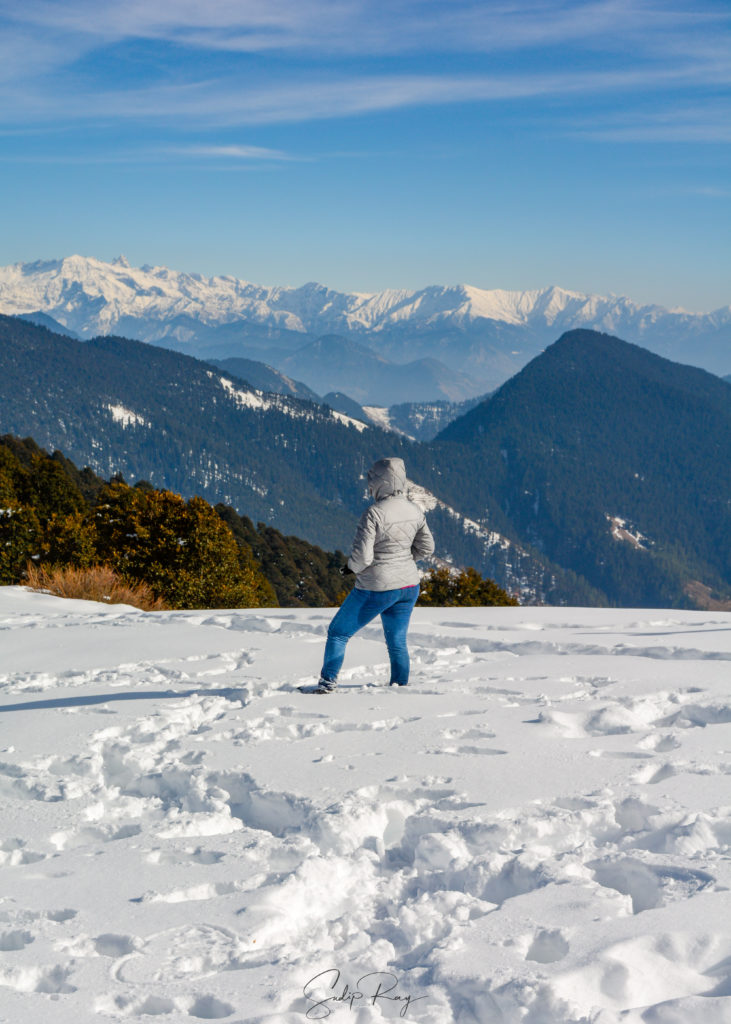
Jalori is also perfect for indulging in fun snow activities like snowboarding, snow surfing and so on.
If you are visiting in the summer months, go on a short trek to the Serolsar Lake, which is regarded as one of the most beautiful places of Tirthan Valley. It is located 5 kms away from Jalori Pass. The trek takes about 4 hours to complete. Sitting atop an altitude of 3100 mts, it is surrounded by a thick forest of Alpine vegetation. The locals believe the lake to be the abode of a snake goddess and the water to bear medicinal properties. We gave Serolsar Lake a pass due to the heavy snow and immense cold.

You can also take a short trek to the Raghupur Fort, which is just 3 kms away from Jalori Pass and offers a spectacular 360 degree panoramic view of the Dhauladhar range.
A series of tumble and stumble later, we walked down the Jalori ridge. We gorged on steamy Maggi and tea at a road side stall. It’s time to return to Jibhi.
In the afternoon, take a walk around Jibhi. Revel in the silence of the valley barring the burbling sound of the Tirthan river. Feel the peace of the village engulf you. Let yourself lose in the thought of losing yourself to Jibhi. It will surely be one of the fondest memories of Jibhi.

At night, do stargazing from the veranda as the sound of Tirthan river strikes a chord to your heart. And, you will fall in love with Jibhi for the umpteenth time.
Day 4: Onwards to Manali via Kasol.
It’s time to leave Jibhi with a promise to return some other time. As you ride away from Jibhi, drink in its beauty and serenity for one last time.

The next destination is Manali, one of the most famous hill stations of India. En route, you may either visit the Naggar Castle or make quick stops at Kasol and Manikaran. We opted for the second one.

Enjoy a sumptuous breakfast with Aloo Paratha at the river side dhabas in Aut before starting your journey. The 50 km road between Aut and Kasol is mostly lined with towns and villages. From Bhuntar, the striking Parvati river will accompany you all the way up to Kasol.
Kasol is one of the many charming hamlets of Himachal. With the divine Parvati river and lush coniferous forest as its backdrop, Kasol is pretty as picture. It is popular among the domestic and foreign backpackers alike and acts as the base for several treks, such as Kheerganga and Pin Parvati.

On reaching Kasol, we headed to the riverside Kasol Camps. We decided to spend moments here with the Parvati river as we have our lunch. The vivid natural beauty of the place, the yummy sandwiches and the friendly cat – all combined to offer us a memorable experience.
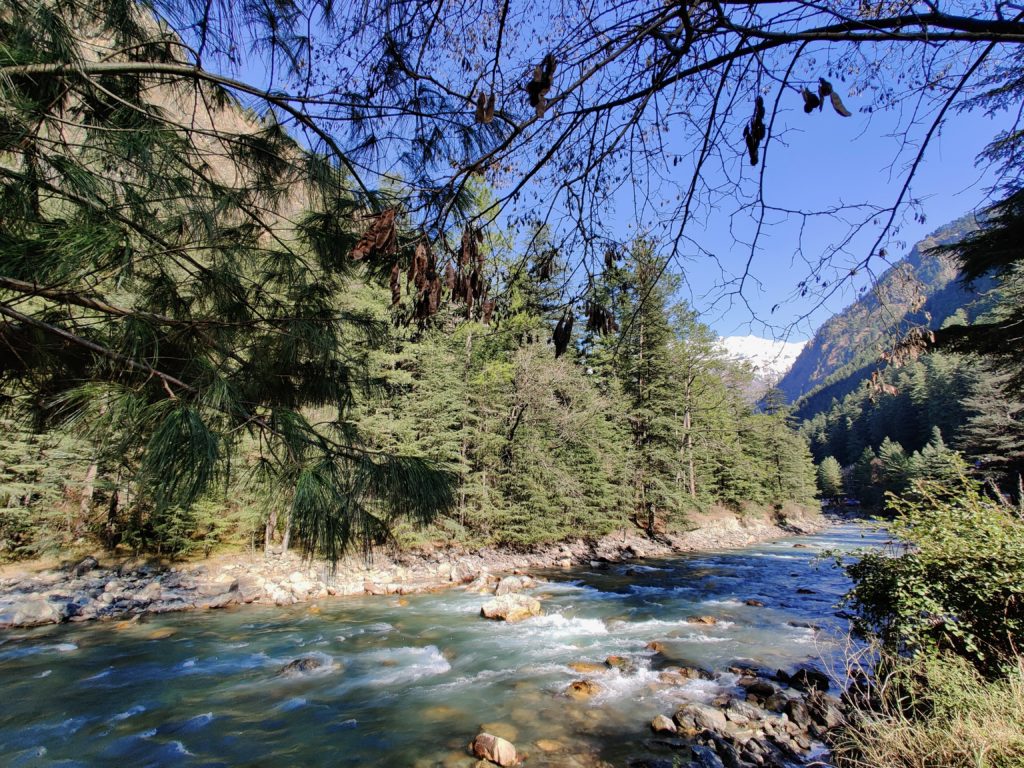

From Kasol, make a quick stop at Manikaran, which is just 4 kms from Kasol. Manikaran is a well known pilgrimage spot for Hindus and Sikhs. It is also famous for hot water springs.
It will almost be sundown when you reach Manali. And Manali will welcome you with frosty ambiance. Gulp down piping hot ginger tea and munch on crispy onion fritters as you enjoy the jovial surroundings of Manali.
Where to stay in Manali:
Manali is one of the tourist hotspots of India and as such, there is no dearth of various kinds of accommodations suiting every budget. We opted to stay out of the crowded areas of Manali and instead chose the peaceful Vashisht locality. We stayed at Irish Cottage & Stays. The room offered gorgeous view of the Beas river with the Manali town on the background and lofty Hanuman Tibba. The rooms are beautiful and service was excellent. The restaurant attached with the cottage is also lovely and we enjoyed the food too.


Day 5: In and around Manali
Our last morning in Himachal started with a spectacular sunrise. We stood on our balcony ignoring the teeth – chattering chill and gaped at the dazzling rays of sun lighted the Hanuman Tibba and gradually the entire Pir Panjal range.
A delightful breakfast later, we set out to experience Manali. Our time was limited, so we couldn’t cover all the spots in and around Manali. Generally, a visit to Manali will be incomplete without going to the following places:
- Solang Valley, famous for its snowy landscapes and adventure activities.
- Rohtang Pass, a vivid and scenic roadwaylocated at a height of 3,978 meter which connects Manali with Lahaul – Spiti area.
- Hadimba Temple, dedicated to Hadimba, wife of Bhima and surrounded by gorgeous deodar trees.
- Manu Temple, a pagoda – style architecture where Manu, creator of human race, is worshipped. In fact, the name Manali is derived from “Manu Alaya”, which means abode of Manu.
- Vasishth Temple, devoted to the sage Vashisth.
- Old Manali, the hub of happening cafes and bistros and the un-denying old world charm.
- Jogini Waterfalls, located near the Vashisth temple and a 3 – hour trek through pleasant orchards and pine groves help you reach here.
- Recently helicopter and balloon rides have started in Manali. If you are up for some adventure, you can book your seats from the Vasishth area.
We had already decided to give Solang a miss, since we had our fair share of snow at Jalori Pass. And Rohtang remains closed in the winter months.
We started off with Vashisth Temple, which was teeming with tourists given it was Christmas. We didn’t spend much time here and left after taking few pictures with the fluffy Angora Rabbit.

Nest, we visited Hadimba temple and it was crammed with visitors. A long queue waited to enter inside the temple. We took a detour and instead strolled through the deodar forests. What a lovely experience this was. The deodar forest was quaint and vivid. The trees stood high, kissing the sky. Leaves rustled as icy winds blew. You will surely lose track of your time here.



For lunch, we went to the adjacent Casa Bella Vista, a vegetarian, Spanish café serving pizzas right from wood fired ovens. We feasted on a tempting pizza loaded with veggies and cheese.


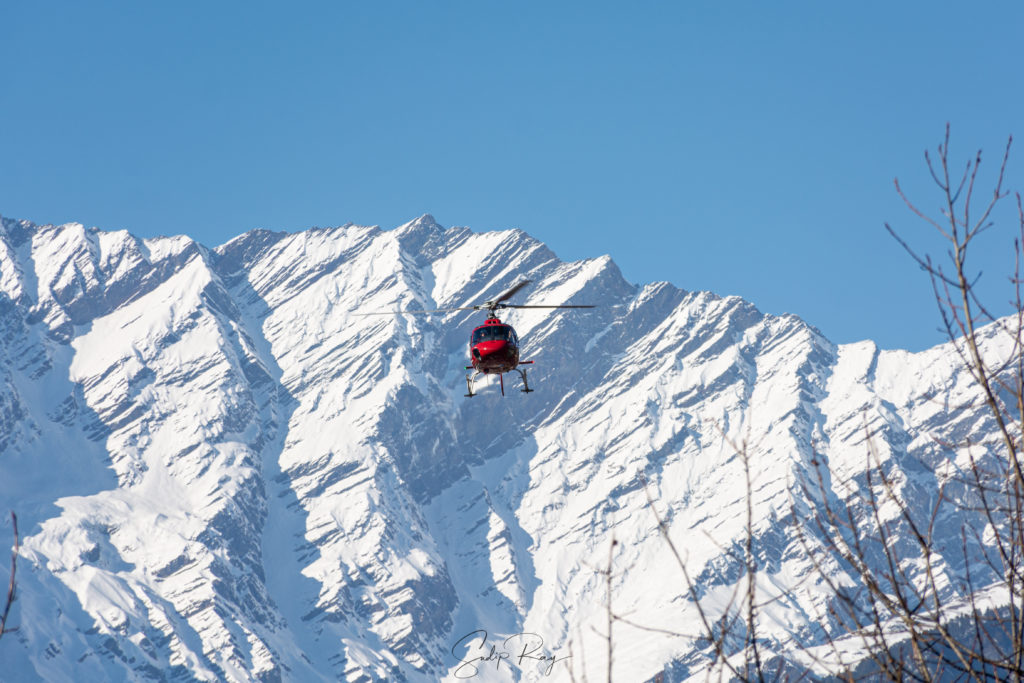
It was time to bid Himachal adieu with a heavy heart, part of which we left in Jibhi. We boarded the bus at 6 in the evening, which took us to New Delhi the next morning.
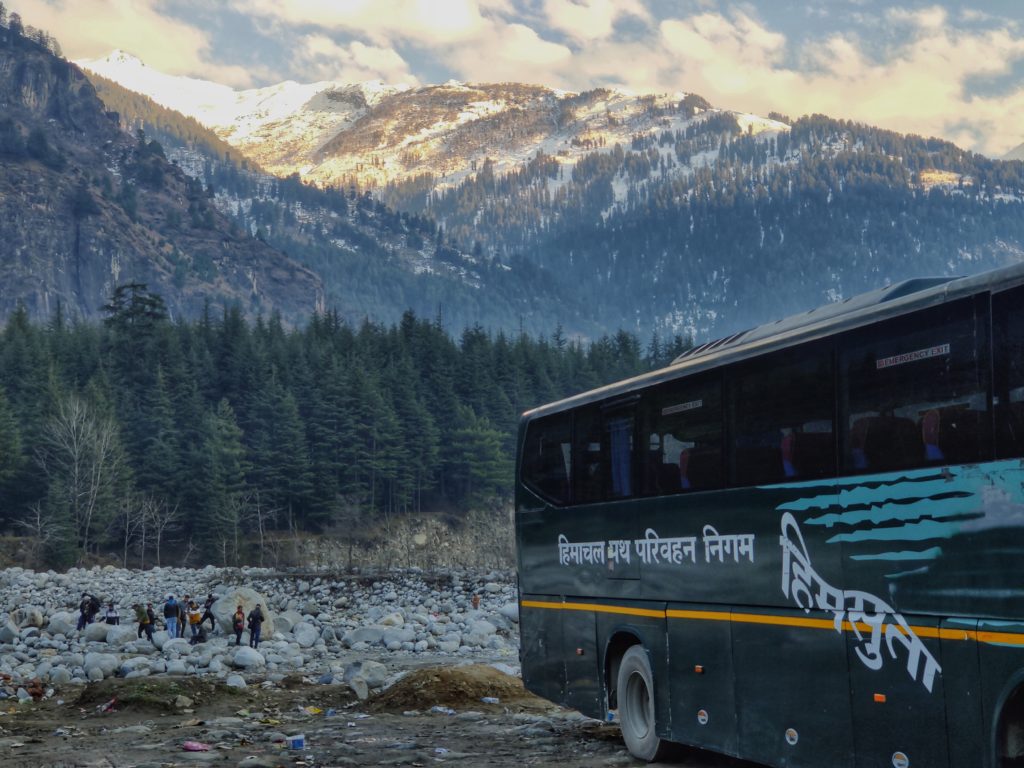
Tips for visiting Jibhi:
- Jibhi can be visited all the year round. If you want to bask in its spring time beauty and go Trout fishing, March – May is the perfect time. If you have snow on your mind, book tickets in November – February.
- Pack heavy woolens and jackets if you are visiting in winter. Not to forget, proper caps that cover your ears and neck, gloves and woolen socks. Jibhi and Jalori Pass are bitterly cold during this time. Even in summer, you should bring woolen clothes as Jibhi can get cold unexpectedly.
- Always hire a local guide for the treks. It is advisable not to go on unknown trek routes without a proper guide.
- Carry sufficient cash along with you as the ATMs in and around Jibhi are not very reliable.
- There are medicine shops in Jibhi, but to be on the safer side, we suggest carry basic medicines along with you.
- Jalori Pass remains closed in most of the winter months. Plan accordingly.
- Take extra pairs of socks and gloves while visiting Jalori. The snow will surely spoil the ones you are wearing.
- Solang Valley gets real crowded during holidays. Traffic jams in Manali can cause real headache during these times. So, try starting for Solang in the early morning.
- Rohtang Pass remains closed in the winter months.
10. Old Manali is a haven for food lovers. Cozy and off-beat cafes have sprung here. Try visiting The Drifter’s Café, The Johnson’s Café, Il Forno and The Corner House.

Feeling like visiting the Himalalyas some more? check out our posts on Sikkim and Sandakphu
https://thefloatingpebbles.com/east-sikkim-journey-through-old-silk-route/
https://thefloatingpebbles.com/sandakphu-in-search-of-the-sleeping-buddha/



